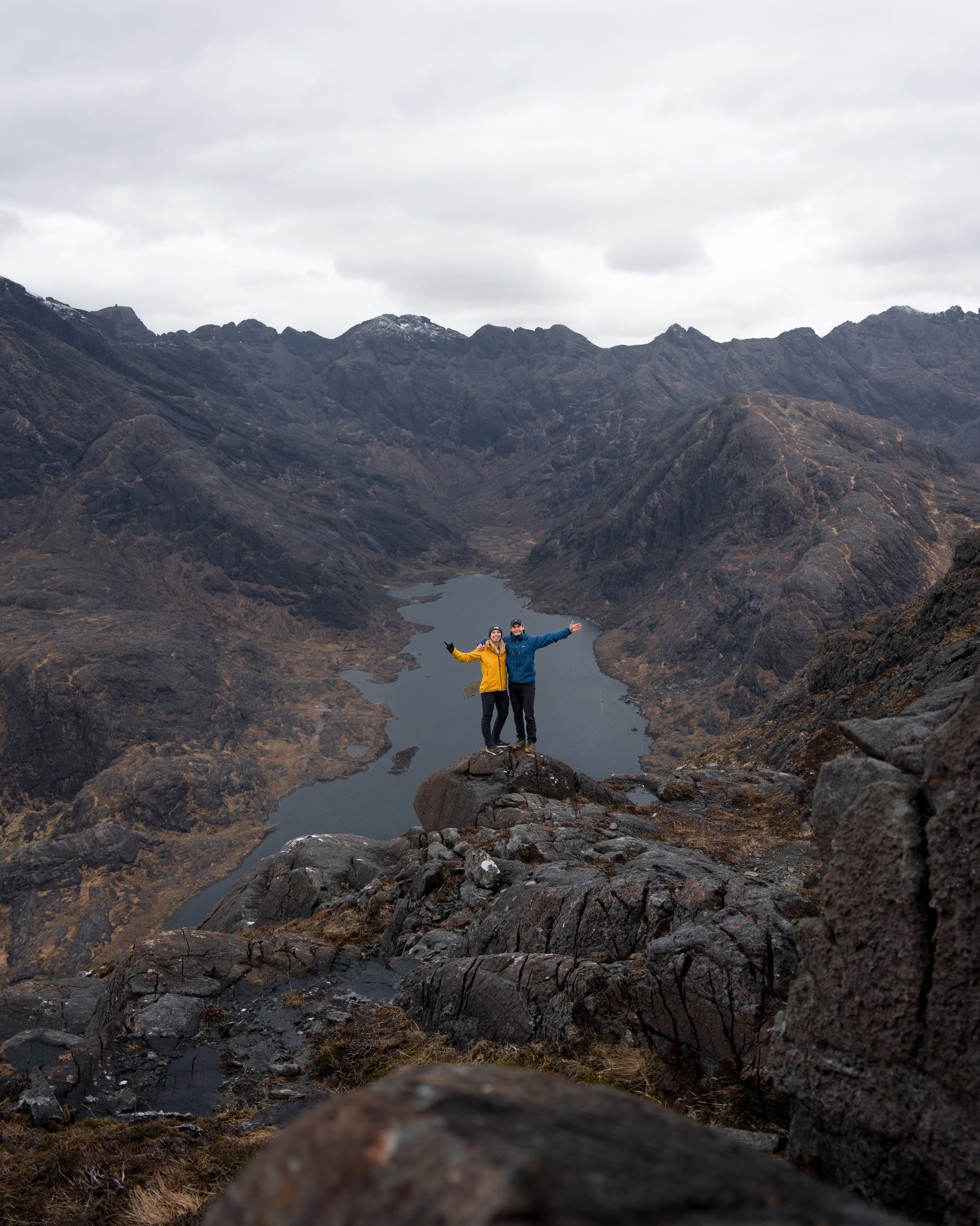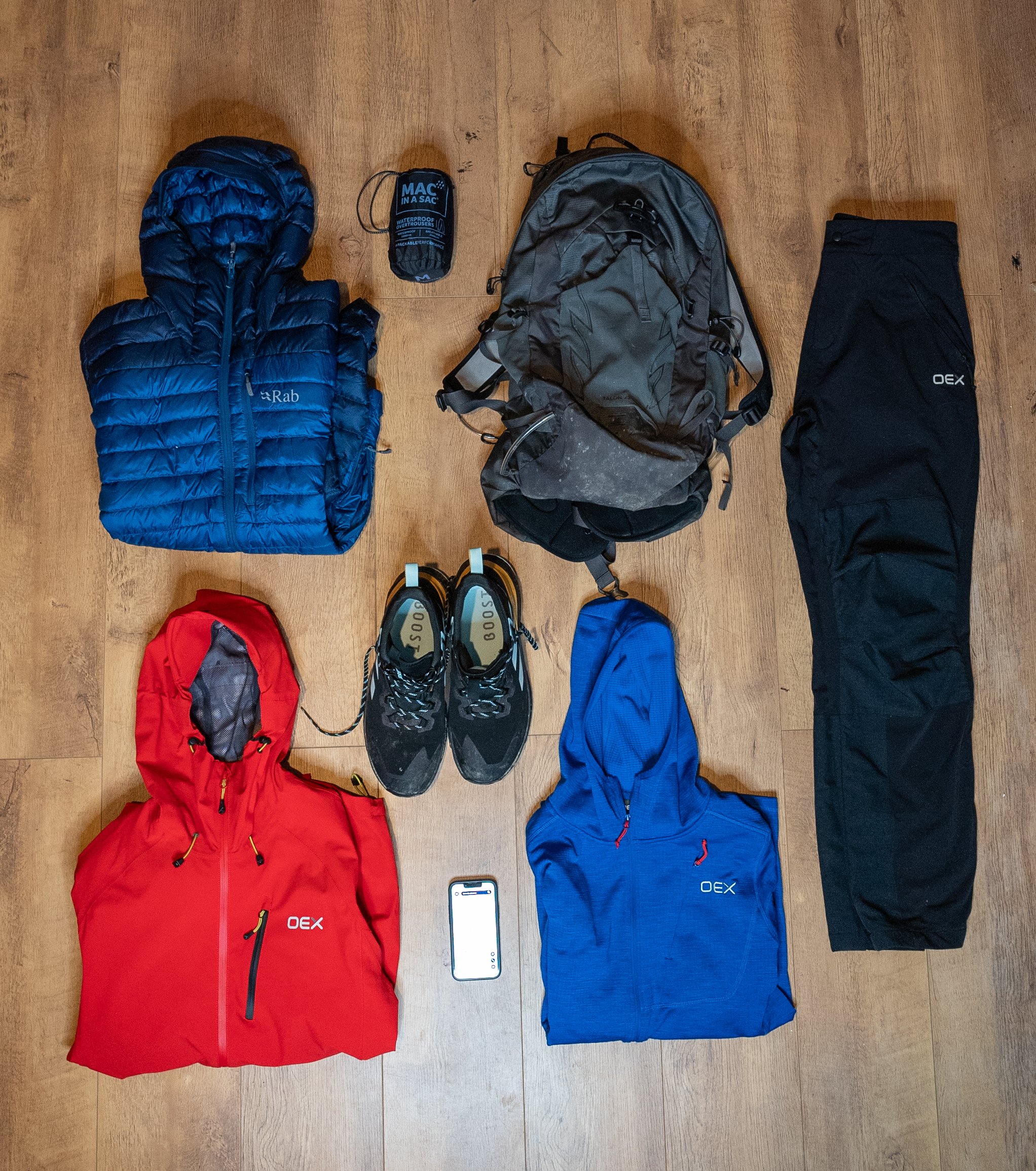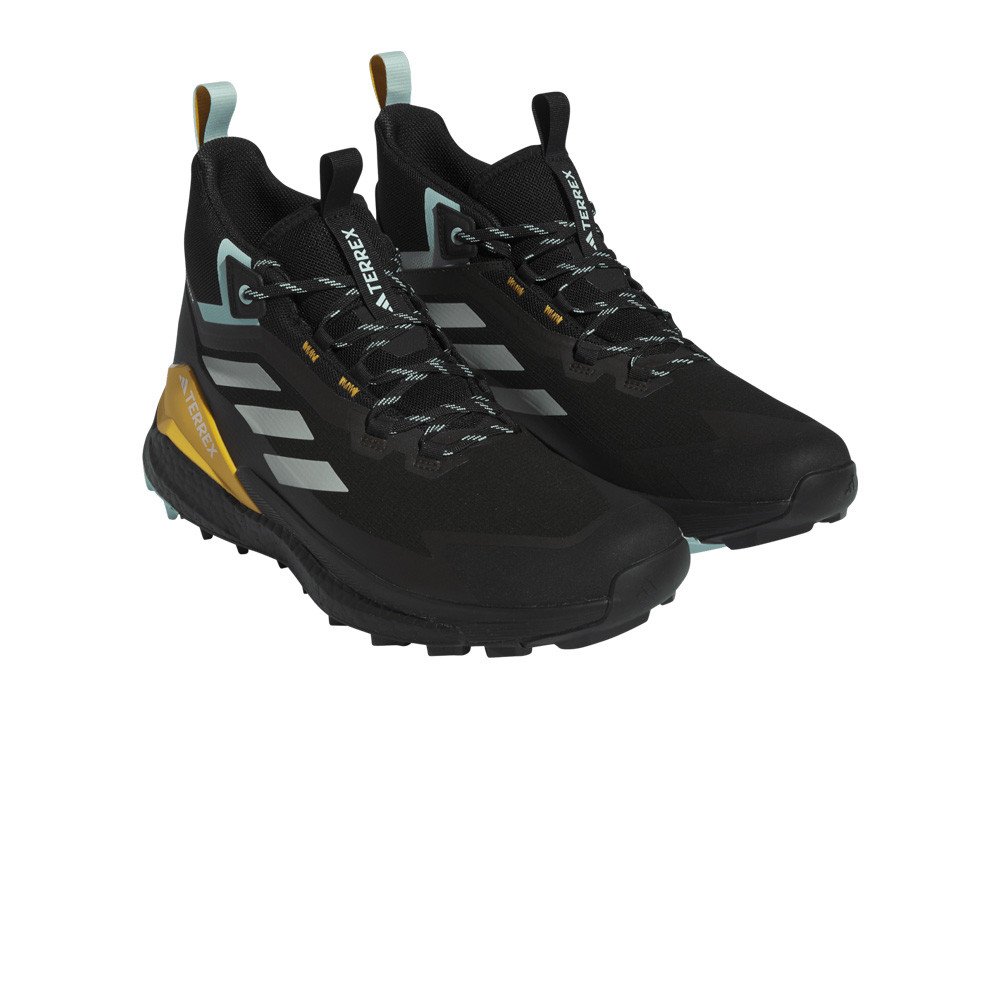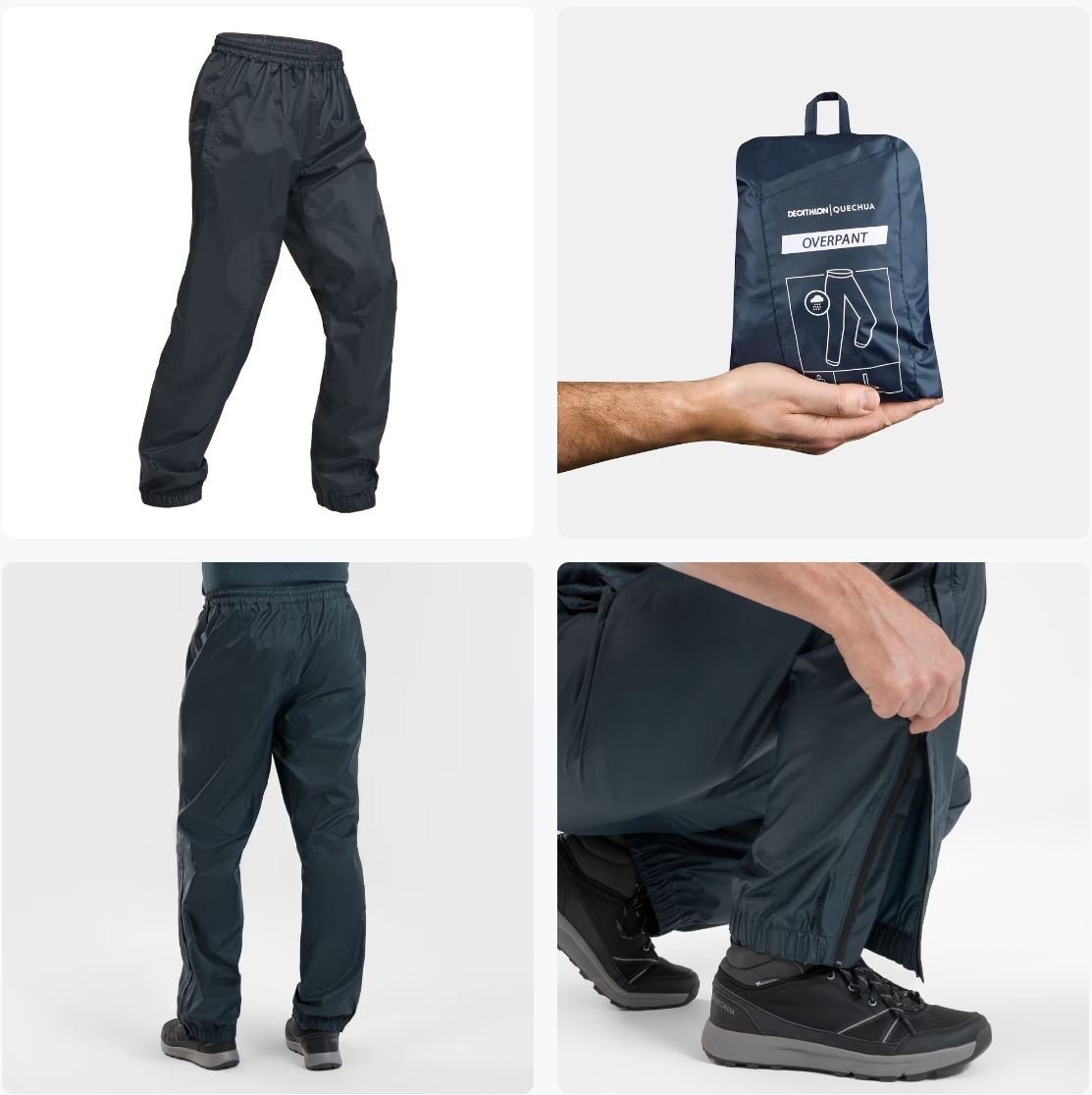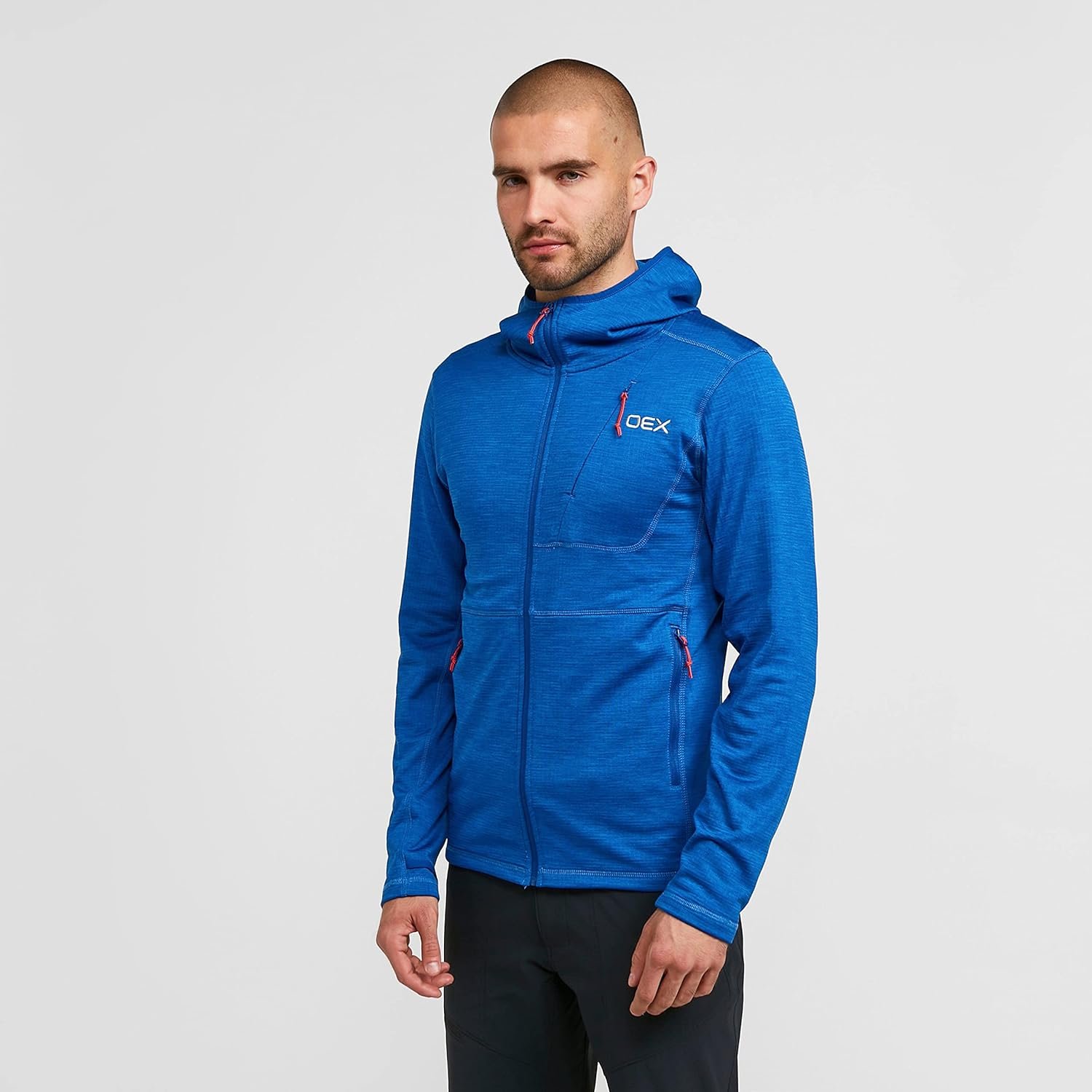8 essential items which beginner hikers should invest in
Within this blog post, I list the 8 pieces of hiking equipment you should invest in first and outline what you should look for in every piece of equipment.
Most people will start their journey into the outdoors as ‘fair weather, casual hikers’ who will tend to go out infrequently in the better and warmer conditions.
For that reason you don’t need to go buying the best of everything straight away.
Technical synthetic gym gear such as shorts, leggings, t-shirts, hoodies, and 1/4 zips are perfect for hiking in, especially in the warmer and drier months of the year. I got away with using trainers and synthetic gym/sports clothing in the early stages of my journey into the outdoors and I still do use it.
However as the temperature drops and weather gets worse, this is where your gear will really matter.
Theres two quotes which I tend to stick by when it comes to outdoor clothing:
“Theres no such thing as bad weather, just bad clothing”
“You buy cheap, you buy twice”
Invest in your gear and it will not only keep you safe in the outdoors, but it will last.
Below are the eight items I would recommend investing in. I have numbered them in order of importance and have gone into depth for each piece of equipment.
Waterproof Coat
Waterproof hiking boots/shoes
Hiking daypack
Waterproof over trousers
Hiking navigation app
Down jacket
Soft shell water resistant trousers
Quality Mid-layer
Waterproof shell jacket
This is not to be confused with a down jacket (see below) or a parka. The purpose of a outer shell is to sit over the top of your mid or base layer and keep you protected from the elements.
Waterproof shells are usually much lighter and smaller than most coats meaning they can be packed down and fit into your bag.
You should consider the following five things when purchasing a waterproof jacket.
Waterproof - First and foremost it should be waterproof and have a hood. I would recommend picking up a coat with a minimum waterproof rating of 10,000mm. 20,000mm should be the aim if you want to withstand heavy down pours.
Comfort & Fit - It should be big enough to fit a mid layer and even a small down jacket underneath, but not so big that you look like a child who’s borrowed his dads coat. I also prefer a coat which has some stretch in it so it allows me to move more freely when scrambling.
Breathability - The more active and vigorous your adventure, the more breathable the jacket will need to be. The breathability rating don’t need to be worried about too much as a good waterproof membrane will be highly breathable. In really active situations you will sweat no matter what, so its better to look for features such as underarm zips to increase ventilation.
Functionality - Personally I would look for a jacket which has the following features
Zipped Pockets - Internal and external
High chin guard - Protects your face against the elements
Underarm zips - This will help with breathability.
Adjustable cuffs, hem, & hood - Keeping out the elements an help with the fit
Colourful - Having a brightly coloured jacket not only allows you to be a Instagram wanker and stand out in photos, but also makes you far easier to spot if something does go wrong and you need to be rescued.
Waterproof hiking boots/shoes
Now stable and grippy trainers or trail shoes are great choice of you are just starting out and only go hiking in the dry summer months.
However when the weather worsens you will be more comfortable and safer in hiking specific footwear.
When you are on the lookout for hiking shoes you should consider the following 7 things.
Comfort
Durability
Protection
Stability
Grip
Weight
Waterproof (optional)
Comfort should be the first thing you look for and shouldn’t be sacrificed.
I prefer a shoe which is lightweight, this usually means you will sacrifice some protection and durability, but I prefer not having shoes which aren’t cumbersome so I can be nimble in the hills.
I also favour footwear which is waterproof. Although this sacrifices breathability, I can hike in the heat with dry feet and I dont have to worry about my feet getting wet if I accidentally step in a bog or puddle.
The style and the material of the shoe is also down to personal preference.
Low cut - sits beneath the ankle
Mid cut - sits above the ankle
High cut - covers the ankle and extends part of the way up the shin
For the majority of my hiking I favour a mid-cut shoe as they offer more protection and stability around the ankle and are better at stopping water or debris finding it's way into my shoes.
My shoe of choice is the Adidas Terrex Free Hiker 2 GTX, I also own the non gore-tex version for summer.
In situations when there is snow, I will switch to a high cut shoe which is insulated, this is because the focus is on staying dry and warm rather than weight and moving fast.
Hiking daypack
You can get away with wearing a standard backpack. However as you spend more time in the hills and tackle more technical terrain, having a backpack which was designed to be worn hiking will make a huge difference to your comfort levels and how easily and confidently you can navigate more technical terrain.
15-25 litre capacity - The size of your pack will be dependant on the season and weather, what type of hiking you are doing, how far you are hiking, alongside what non essential items you like to carry (camera gear). Personally I find the 20-22 litre mark to be perfect for a day pack.
Comfort and fit - Look for a pack which has the following features:
Padded and vented back panel
Padded shoulder strips
Chest strap - Helps secure the backpack
Padded hip straps - help disperse weight and stop the pack from moving around.
Functionality and features - Also consider the following features when buying pack
Lightweight
Zipped top entry - I prefer zipped entry rather than clipped lid compartment
External pockets - I like a bag which has stretchy mesh pockets on both sides and the front
Hip belt pockets - Allows you to stash and quickly access small essential items
Internal pockets - Nice to have to store items of high value
Water bladder compatible
Rain cover
Walking pole/ice axe loop: not essential for all hikers
I currently use the Osprey Talon 22L. It’s comfortable, lightweight, and big enough to fit all my gear in. It’s also got a whole host of functional features, including waist belt pockets big enough to hold a phone. The only down side is that it doesn’t come with a waterproof cover, but you can buy one or use internal dry bags to keep your gear safe.
Packable Waterproof Over trousers
Now I’m not a fan of waterproof trousers, in fact I’m not a huge fan of hiking in trousers altogether and I will wear shorts for as long as I can get away with.
Not only are waterproof trousers very expensive, they are also quite bulky, and run very hot
Lightweight packable waterproof trousers solve this issue.
They are very affordable, lightweight, and can be easily carried in a backpack with you, making an appearance when the weather takes a turn for the worse.
Investing in packable over trousers allows people to save some money and go hiking in bottoms they already own (shorts, leggings or synthetic tracksuit bottoms - just please don’t wear anything cotton)
Look for a pair which have zipps on the ankles so you can get them on and off without having to remove your shoes.
Hiking navigation app
This list is just about clothing. Poor navigation is one of the main reasons people end up being rescued in the hills.
Most people who are new to hiking will use their phones for navigation. There is nothing wrong with this but google maps will not cut it. Invest in a proper navigational app and learn how to use it.
There are several out there but I recommend using OS Maps premium service. It costs £28.99 for the year and offers the following.
Access to all 607 OS maps covering all of Great Britain
It allows you to download routes to use for offline use
GPS Tracker
You can print off to-scale paper maps as back up
The website and app work quickly and seamlessly so you can plan a route on you computer and access it on your phone
A view finder feature which allows you to identity landmarks using your phones camera
Always remember to pack a powerbank and cable to make sure you don’t run out of battery.
Insulated down jacket
A down jacket is one which has been insulated by feathers. The feathers create hundreds of air pockets which trap and retain heat.
Down jackets great for having during the colder months of the year.
As I run hot, I never wear them when hiking uphill (hence why they are further down this list).
Instead I carry it in my bag and throw it on when I am up on a summit, I have stopped for food or when I’m heading back downhill.
Although some are moisture resistant they are not waterproof and should not replace a outer shell. Below are the things you should consider when buying a Insulated down jacket.
Synthetic vs Down filling - This will come down to budget and your morals. Down filling is more compressible, longer lasting, and has a better warmth to-weight ratio. However it is more expensive, useless if it becomes wet, harder to clean, and goes everywhere if you rip you coat.
Down Fill Power vs. Fill Weight - Fill power measures down’s quality or amount of loft, this ranges from 400-900 with premium models hitting the 800-fill mark or higher. Fill weight is the total amount of down in the jacket. Although more emphasis should be on the fill power (I would recommend at least 700 FP) both are important when selecting a jacket.
Size and weight - You ideally want a light to mid weight jacket which packs down small and can easily fit inside your daypack. Some jackets have the ability to pack into their inside pocket, whilst other have their own separate stuff sack
Fit - The fit should be not to tight or too big. You should allow room for you to be able to wear a mid-layer underneath. and it should be small enough to allow you wear your shoft shell over the top
Features - I personally would look for a down jacket with a hood, a high neck gait, internal and external pockets alongside an adjustable hood and hem
I own both the OEX Kintra Down Jacket and the Rab Men’s Microlight Alpine Down Jacket . Both have 700 FP down fill, I find the Kintra is warmer but the Rab packs down smaller .
Soft shell trousers
Whilst you can get away with hiking in leggins or synthetic bottoms in the drier months, I would advocate that you invest in a pair of softshell trousers for when the temperature drops and the wind picks up.
Soft-shell pants are usually made of high-performance synthetic fabrics that are resistant to abrasions & tears. They are usually water and wind resistant and will help protect your pins from the elements and make hiking in the colder months far more enjoyable.
Softshell trousers are also far more affordable and comfortable than water resistant trousers, and make a perfect wallet friendly combination when combined with waterproof over trousers.
Look for trousers that are stretchy, breathable, durable, lightweight and have adjustable hem.
I currently have OEX Strata Softshell Trousers – They are comfy, fit well, are hardwearing, and because they have 4-way stretch fabric, are unrestrictive. They are also wind and water resistant and don’t run too hot either, which is perfect for a sweaty hiker such as myself.
Lightweight Mid-layer
Although this at the bottom of the list, its still a crucial bit of kit which is worth investing in.
The job of the midlayers is to provide warmth whist being breathable. It should be made up of wool, polyester, or a blend of the two. Cotton should be avoided.
Other features which I would recommend are:
Lightweight
Stretchy
Full Zip
close fitting hood Hood
Zip pockets
Elastic cuffs with thumb loops
The reason why it is at the bottom is that most people already own a synthetic mid-layer of some kind (be that a hoodie, 1/4 zip, or fleece) which they wear to the gym or play sports in. This is an ideal mid layer for beginner hikers and allows you spend your well earned money elsewhere.
I use and recommend the OEX Alpine Full-Zip Fleece as it’s everything you need for a midlayer.
So there we have it, the eight items which beginner hikers should invest in.
Did you find the blog useful? Have I missed any items off this list? Let me know your thoughts in the comments below.
Remember you dont have to spend a small fortune or buy the most expensive and the ‘best’ pieces of equipment to be properly equipped for the outdoors, just dont skimp out on these key pieces of equipment.
I have written a guide below which outlines the best ways to find the cheapest hiking gear.
If you did find the blog helpful, I’d appreciate you giving it a share or giving me a follow on social media, every bit of support goes a long way.
For more hiking inspiration check out my other guides below
For some Welsh travel inspiration check out my in-depth guides to each of my favourite Welsh regions below.

